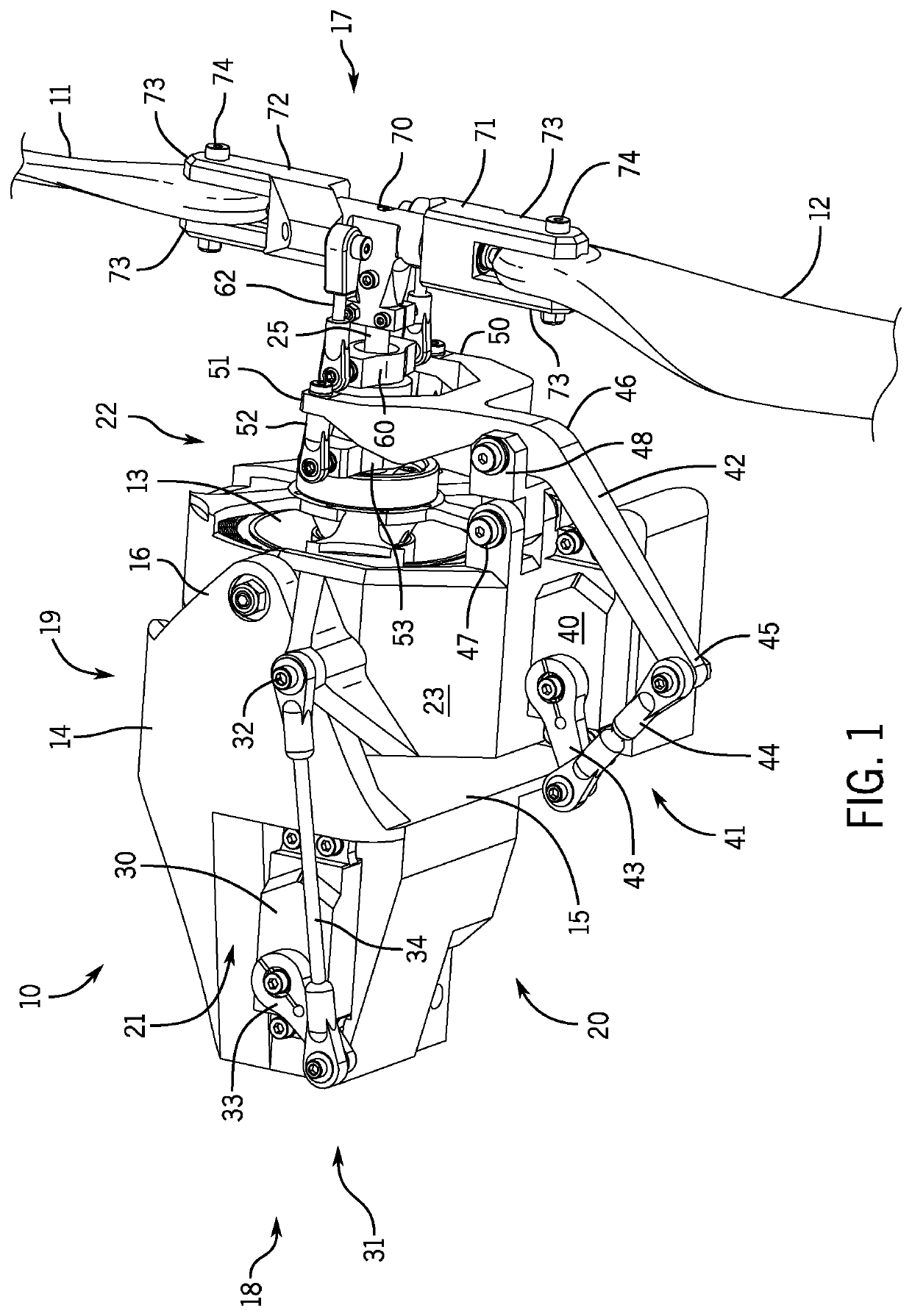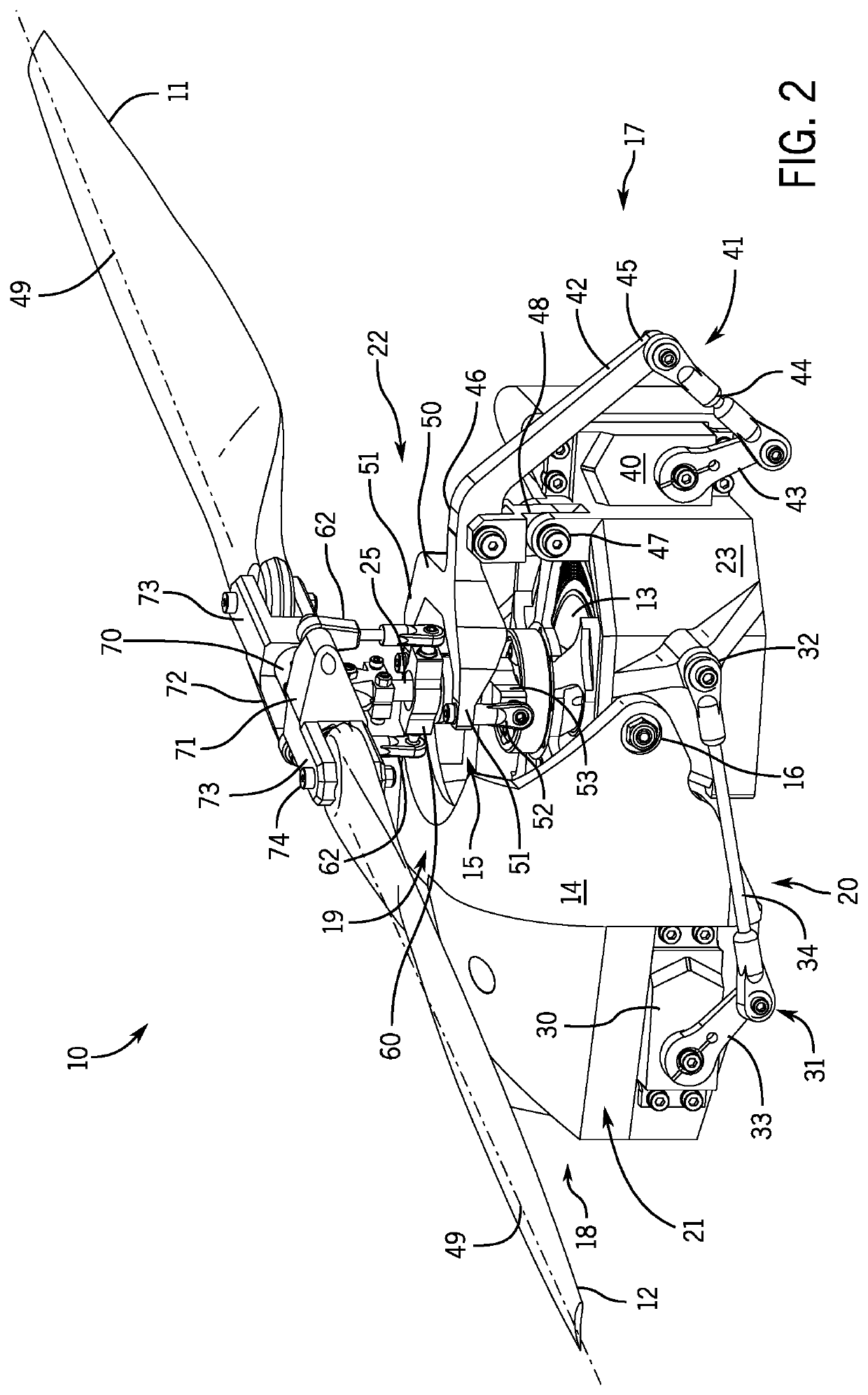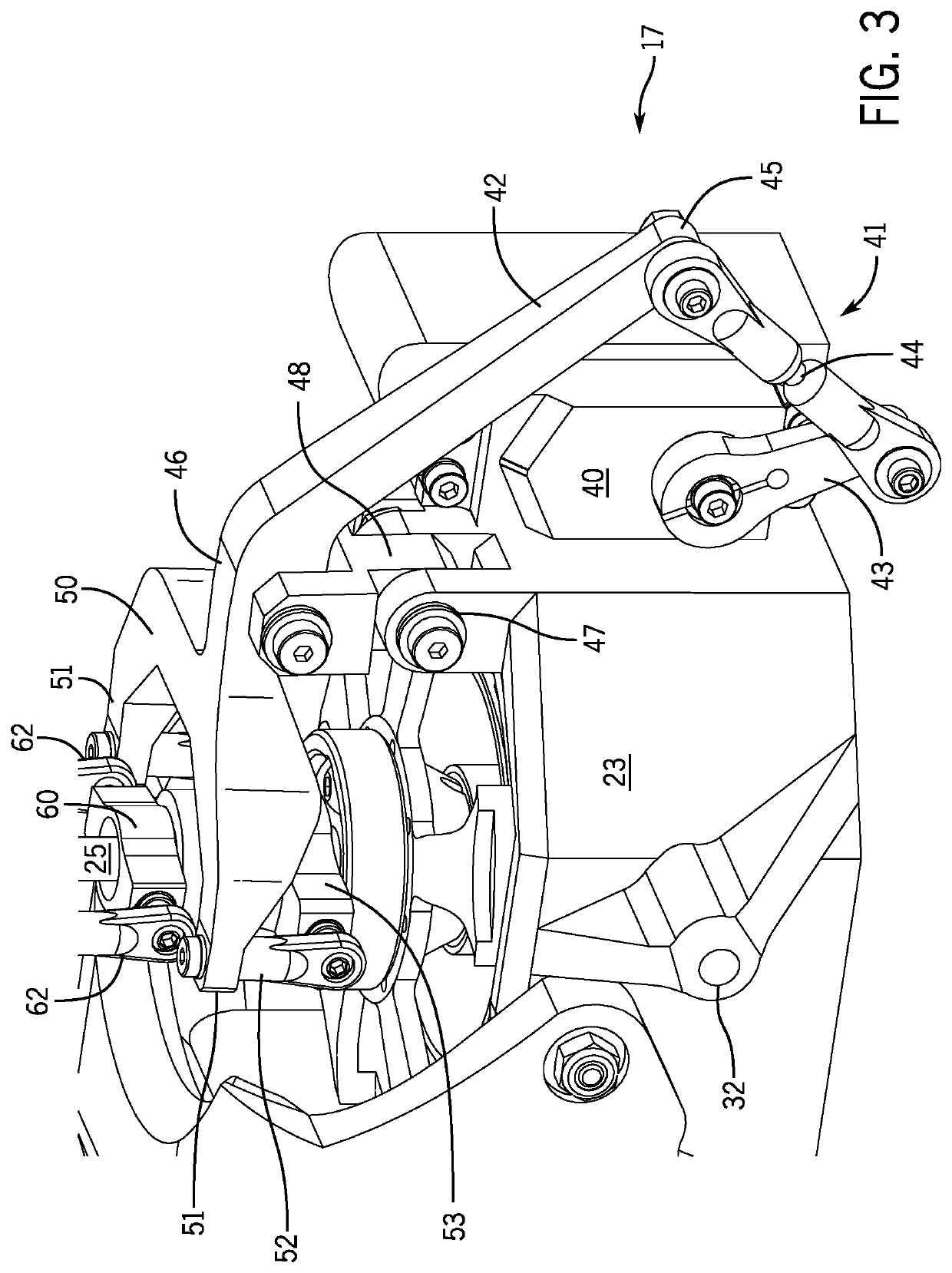Apparatus with Variable Pitch and Continuous Tilt for Rotors on an Unmanned Fixed Wing Aircraft
- Summary
- Abstract
- Description
- Claims
- Application Information
AI Technical Summary
Benefits of technology
Problems solved by technology
Method used
Image
Examples
Example
[0022]While the following description details the preferred embodiments of the present invention, it is to be understood that the invention is not limited in its application to the details of arrangement of the parts or steps of the methods illustrated in the accompanying figures, since the invention is capable of other embodiments and of being practiced in various ways.
[0023]There usually must be a compromise between the pitch of the rotors necessary to perform vertical takeoff and landing and the pitch necessary for efficient forward flight. Some designers of VTOL UAVs have developed tilt-rotor designs that have continuous tilt functionality, but without the ability to vary pitch in flight they must settle for rotors with pitch that is neither optimized for hover or for forward flight. This lack of optimization can lead to dangerous situations when landing an aircraft, due to the compromised function of the rotors, such as rotor stall due to an excessive rate of decreasing altitud...
PUM
 Login to View More
Login to View More Abstract
Description
Claims
Application Information
 Login to View More
Login to View More - R&D
- Intellectual Property
- Life Sciences
- Materials
- Tech Scout
- Unparalleled Data Quality
- Higher Quality Content
- 60% Fewer Hallucinations
Browse by: Latest US Patents, China's latest patents, Technical Efficacy Thesaurus, Application Domain, Technology Topic, Popular Technical Reports.
© 2025 PatSnap. All rights reserved.Legal|Privacy policy|Modern Slavery Act Transparency Statement|Sitemap|About US| Contact US: help@patsnap.com



